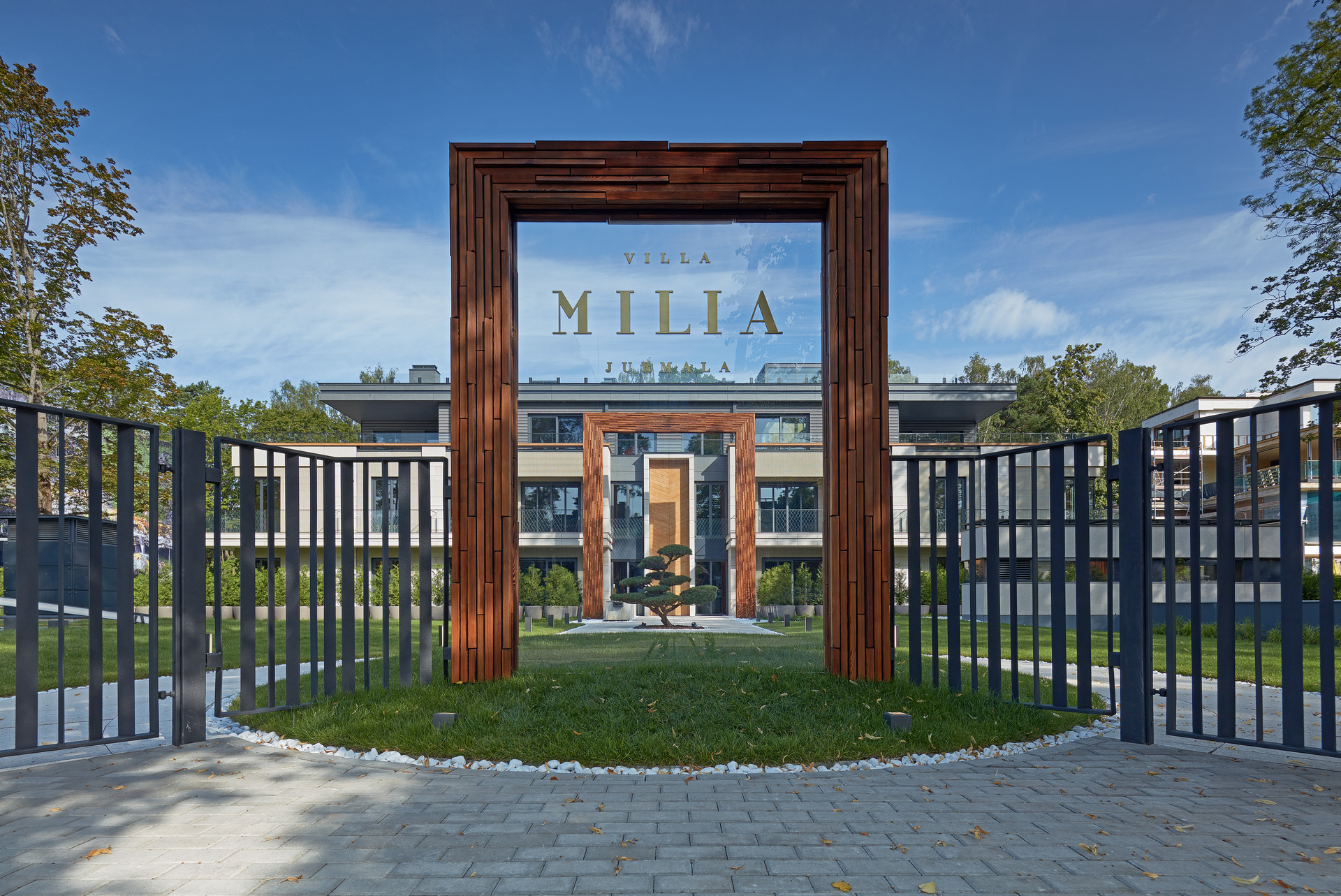Expanding Horizons
As a bona fide art form, architecture is a reflection of its time, it has the ability to preserve and carry forward in time the understanding of life of entire generations. The exquisite, meditative architecture of Villa Milia has been made not to limit the space, but to extend it, thus creating a new world for inspiration, creativity and conversations. Here our eternal companions, the natural materials wood, stone and glass, are in their innate state, thereby prompting a dialogue with the visitor, each telling their own story, all together forming symphonies, giving them shape and a special meaning.
Immersed in a game of thousand reflections, the façade tiles tell us that about ambiguity and uncertainty of everything in this world. The polished edges of glass panels of balcony railings reflect the sunrays, causing us to recall vivid and unforgettable experiences that have changed us forever. Silver travertine, this textured and vivid stone, symbolises stability and well-being. The wood channels strength and gives confidence that everything is possible. Just as a mighty pine grows up from a tiny seed, a wish planted in the consciousness gives the strength to fulfil it.
Latvian architect Zane Tetere has a distinctive style. Whilst keeping the unimposing carcass of the building characteristic to Jurmala, she focused on form and attention to detail when creating Villa Milia. Villa Milia is a refined, intellectual project that epitomises minimalism in all its forms (expressive visual appearance, semiotic meaning for solutions). The architectural concept is an elegant and artful fusion of the last great style, the exquisite Art Deco, and the laconic functionalism, popular in Jurmala in the 1930`s.
More
Hide


